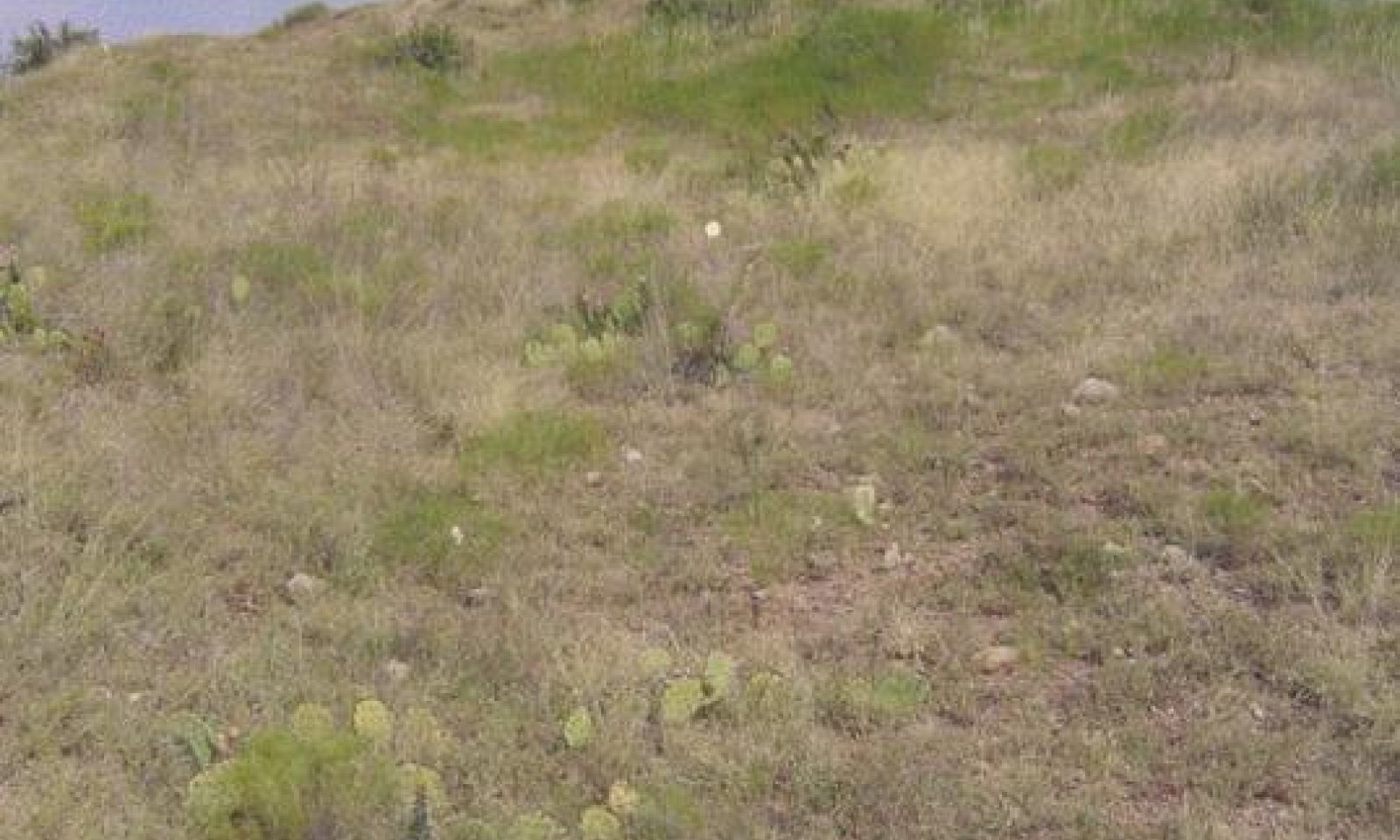
Shallow Red Clay 23-31" PZ
Scenario model
Current ecosystem state
Select a state
Management practices/drivers
Select a transition or restoration pathway
-
Transition T1A
Absence of disturbance and natural regeneration over time, may be coupled with excessive grazing pressure
More details -
Restoration pathway R2A
Adequate rest from defoliation and removal of woody canopy, followed by reintroduction of historic disturbance regimes
More details -
No transition or restoration pathway between the selected states has been described
Target ecosystem state
Select a state
State 1
Grassland State



Description
This is the reference or diagnostic community for the site. The description is based on early range site descriptions, clipping data, professional consensus of experienced range specialists, and analysis of field work.
The interpretive plant community is assumed to have been a Mixed-grass Prairie Community (1.1). Shrubs were widely scattered in protected areas and along draws, but made up less than three percent of the total annual production. The clay soils and droughty conditions apparently also kept forb diversity and production low. Sideoats grama was the dominant grass throughout the site, although little bluestem was occasionally co-dominant on in the more northern latitudes and north facing slopes. Also occurring on the site, but in smaller amounts, were meadow dropseed, silver bluestem, alkali sacaton and a number of shortgrasses. Common shortgrasses included buffalograss, blue grama, threeawns, tridens and sand dropseed. Characteristic forbs were western ragweed, dotted gayfeather, dalea and Indian rushpea. Lotebush, four-winged saltbush, tasajillo, vine ephedra and pricklypear were common woody plants. The Mixed-grass Prairie Community produced from 400 to 1400 pounds of biomass annually
The Shortgrass/Midgrass Prairie Community represents the last grassland phase in the transition of the Mixed-grass Prairie Community (1.1) toward a Shrubland state (2.). Woody species, especially juniper, mesquite, pricklypear, tasajillo and lotebush are encroaching, but are not seriously impacting forage production. Invading brushy species are generally less than four feet tall and provide less than 15 percent of the annual production. The dominants of the reference community are being replaced by less palatable grasses, such as silver bluestem, and sand dropseed, tobosa, where present. Less palatable forbs such as dalea, dotted gayfeather and western ragweed are also increasing and replacing the palatable forb dominants of the reference community.
Submodel
State 2
Shrubland State



Description
The Shortgrass/Mixed-Brush Community exceeds 15 percent woody plant canopy of mixed-brush, depending on how long the site has been overgrazed and brush not controlled. There is a continued decline in diversity of the grassland component and an increase in woody species and unpalatable forbs. All, except the more palatable woody species, have increased in size. Mesquite is generally dominant on the site throughout the MLRA. However, redberry juniper has increased considerably in recent years. Many of the climax shrubs are present. Typically, agarito, pricklypear, and lotebush form mixed-brush complexes with mesquite and juniper.
Mesquite and/or juniper dominate the Mixed-brush/Shortgrass/Annuals Community production. Even though the canopy remains approximately 15 - 25 percent, the trees and shrubs can exceed 65 percent of the annual production. Common understory shrubs are pricklypear, agarito, lotebush, vine ephedra and tasajillo. Shortgrasses and low quality annual grasses and forbs occupy the woody plant interspaces. Characteristic grasses are buffalograss, rough tridens, threeawns, hairy grama, Texas grama and red grama. Forbs found in this community include dotted gayfeather, croton, western ragweed, gaura and broomweed.
Submodel
Mechanism
Due to heavy continuous grazing, no brush management, and no fires to keep the brush species in check, the Grassland State will transition into the Shrubland State.
Mechanism
Converting the Woodland State back to the Grassland state requires extensive and expensive reclamation practices. Without major brush control and management inputs, this plant community cannot be returned to grassland. Range planting, prescribed grazing and prescribed burning, must follow intensive mechanical brush control.
Relevant conservation practices
| Practice | External resources |
|---|---|
|
Brush Management |
|
|
Prescribed Burning |
|
|
Prescribed Grazing |
|
|
Range Planting |
Model keys
Briefcase
Add ecological sites and Major Land Resource Areas to your briefcase by clicking on the briefcase (![]() ) icon wherever it occurs. Drag and drop items to reorder. Cookies are used to store briefcase items between browsing sessions. Because of this, the number of items that can be added to your briefcase is limited, and briefcase items added on one device and browser cannot be accessed from another device or browser. Users who do not wish to place cookies on their devices should not use the briefcase tool. Briefcase cookies serve no other purpose than described here and are deleted whenever browsing history is cleared.
) icon wherever it occurs. Drag and drop items to reorder. Cookies are used to store briefcase items between browsing sessions. Because of this, the number of items that can be added to your briefcase is limited, and briefcase items added on one device and browser cannot be accessed from another device or browser. Users who do not wish to place cookies on their devices should not use the briefcase tool. Briefcase cookies serve no other purpose than described here and are deleted whenever browsing history is cleared.
Ecological sites
Major Land Resource Areas
The Ecosystem Dynamics Interpretive Tool is an information system framework developed by the USDA-ARS Jornada Experimental Range, USDA Natural Resources Conservation Service, and New Mexico State University.

